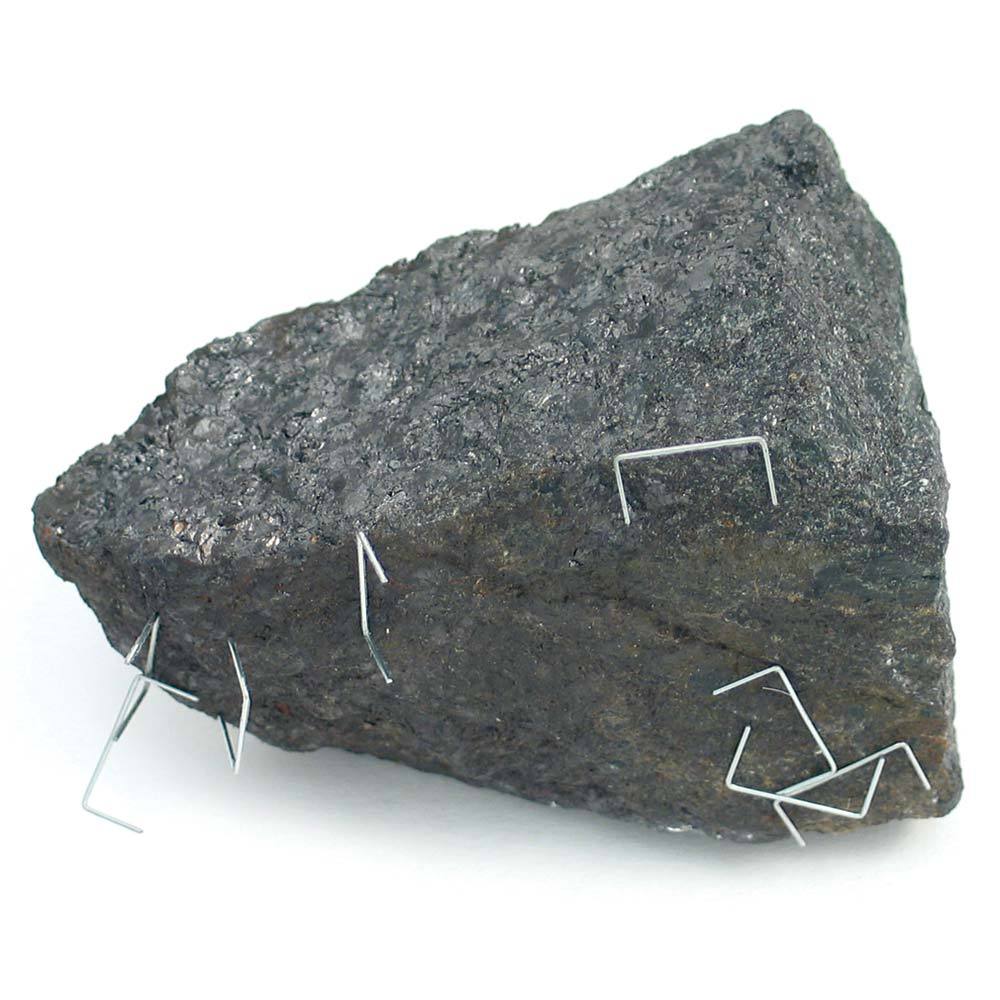Magnetic
Minerals
Some minerals are known to exhibit magnetic properties. The most common of these, and the first discovered by ancient people, is magnetite, the mineral form of Iron (II,III) oxide with the formula Fe3O4. Other minerals with magnetic properties are bornite (Cu5FeS4) and phyrotite, an iron sulfide mineral with variable composition. These magnetic minerals exhibit a different form of magnetism than typical magnetic materials such as iron do.

Materials contain magnetic domains which arise as a result of the spin of electrons aligning. Most materials are not strongly magnetic, meaning that the moments of the individual particles are arranged in random directions and thus there is no net magnetic force exerted by them. Typical permanent magnets are ferromagnetic, meaning that the magnetic moments can be arranged in the same direction, making them magnetic. Magnetite and other minerals are ferrimagnetic. In a ferrimagnetic material, there are two different moments arising from having multiple varieties of particles which are arranged in antiparallel directions. Normally this arrangement would cause there to be no net force, but in ferrimagnetic materials, one direction exerts a stronger force than the other, creating a net magnetic effect. In magnetite, this is caused by aligning of the iron II and iron III ions, where iron II ions have a stronger magnetic moment than the iron III.

An example of ferromagnetism found in iron. All of
the moments point in the same direction, making it
able to respond to magnetism.

An example of ferrimagnetism found in magnetite.
The moments point in opposite directions, but the
ones pointing up have a stronger effect than the
ones pointing down.


|